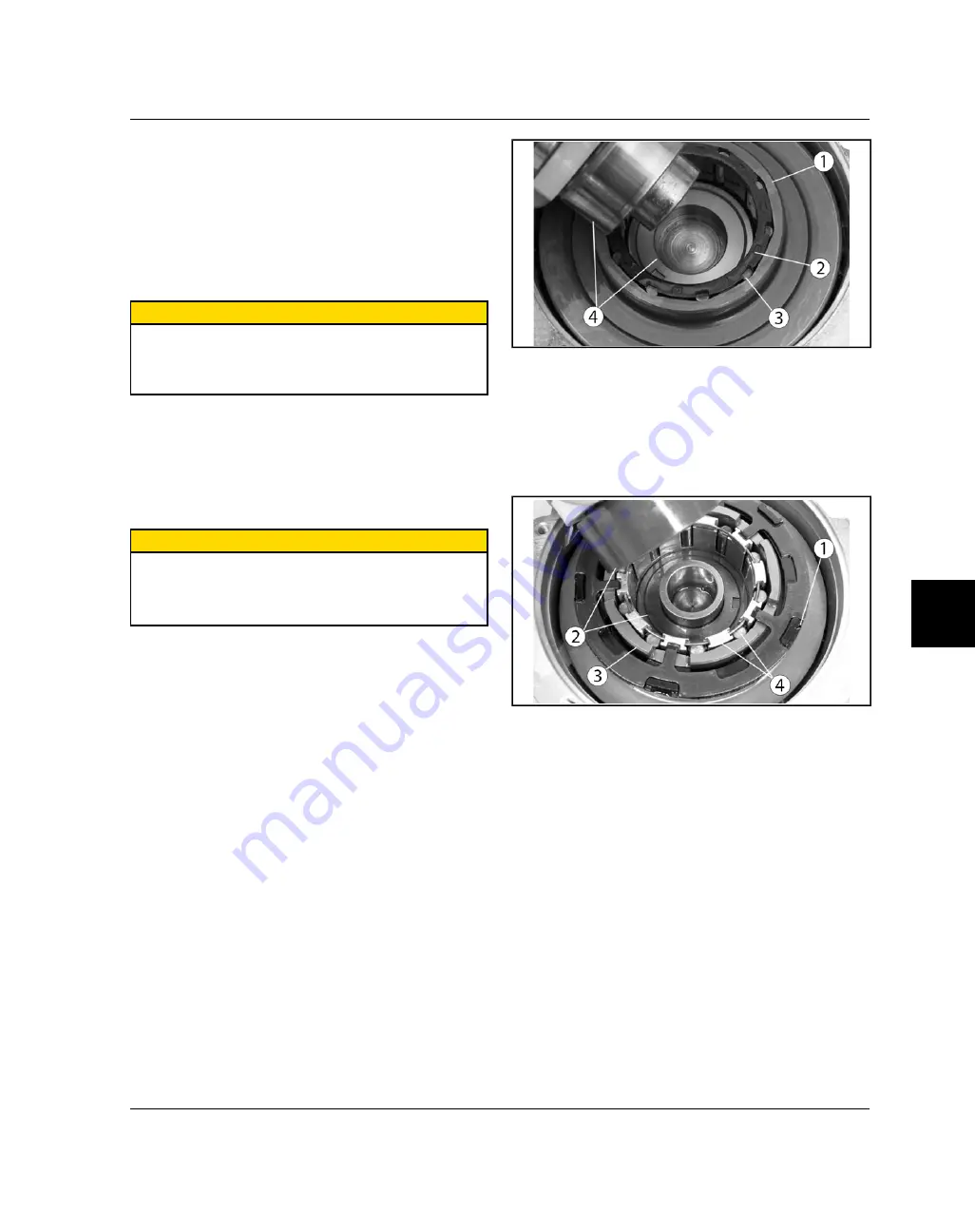
9928487 R01 - 2018 RANGER XP 1000 Service Manual
© Copyright Polaris Industries Inc.
7.21
ALL WHEEL DRIVE (AWD) OPERATION
The AWD switch may be turned on or off while the
vehicle is moving, however, AWD will not enable until the
engine RPM drops below 3100. Once the AWD is
enabled, it remains enabled until the switch is turned off.
Engage the AWD switch before getting into conditions
where the front wheel drive may be needed. If the rear
wheels are spinning, release the throttle before switching
to AWD.
CAUTION
Switching to AWD while the rear wheels are spinning
may cause severe drive shaft and gearcase damage.
Always switch to AWD while the rear wheels have
traction or are at rest.
With the AWD switch off, the vehicle drives through the
rear wheels only (2 wheel drive). When the AWD is
enabled, the front drive acts as an on-demand AWD
system. This means, the front drive will engage once the
rear wheels have lost traction, and will remain engaged
until the torque requirement goes away (i.e. rear wheels
regain traction).
CAUTION
If the rear wheels are spinning, release the throttle
before turning the AWD switch on.If AWD is engaged
while the wheels are spinning, severe drive shaft and
front gearcase damage could result.
AWD Engagement:
When the AWD switch is activated,
the AWD coil is powered by a 12 volt DC input which
creates a magnetic field. This magnetic field attracts an
armature plate that is keyed to the roll cage
w
. When the
ring gear
q
and roll cage
w
are spinning (vehicle is
moving), the energized coil and armature plate will apply
drag to the roll cage
w
that indexes the rollers
e
inside
the ring gear
q
to an engagement position. While in the
engagement position, the front drive will be in an “over-
running” condition (not engaged), until the rear wheels
lose traction. Once the rear wheels begin to lose traction,
the front drive will engage by coupling the output hubs
r
to the ring gear
q
via the rollers
e
. The front drive will
remain engaged until the torque requirement goes away
(i.e. rear wheels regain traction).
AWD Disengagement:
Once the rear wheels regain
traction, the front wheels will return to the “over-running”
condition. The vehicle is now back to rear wheel drive
until the next loss of rear wheel traction occurs.
Torsion Spring Operation:
The torsion spring
q
acts
as a return mechanism to help disengage the coupling of
the output hubs
w
and ring gear
e
by creating an “over-
running” condition for the rollers
r
upon disengagement.
















































